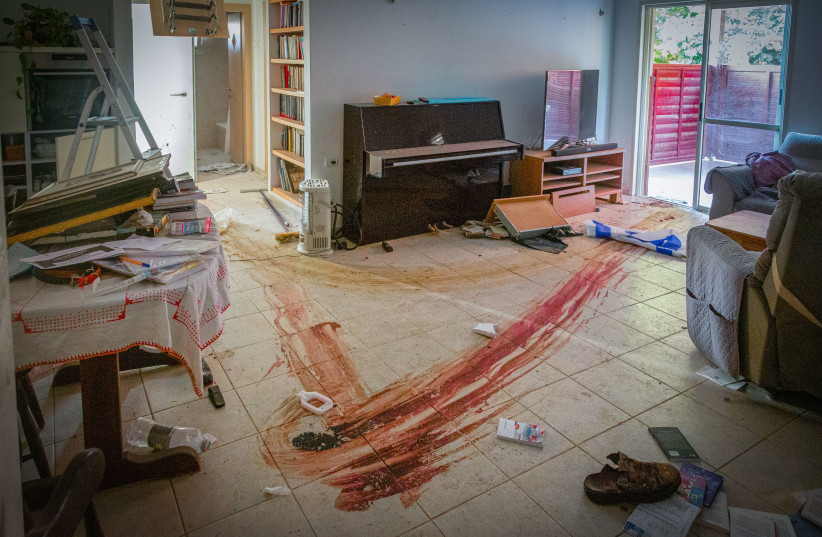The United Nations report on the sexual violence of October 7 is not upsetting because of the lack of international response, it is upsetting because Israel is stuck between a rock and a hard place, and the report only exemplifies that.
A team on a mission to Israel, led by the UN Special Representative of the Secretary-General on Sexual Violence in Conflict, Pramila Patten, uncovered substantial evidence confirming that individuals, including fatalities, hostages, and survivors from October 7, were the victims of sexual abuse and rape perpetrated by terrorists.
The release of this report marked the first occasion on which an international organization has substantiated Israel’s claims following October 7.
The team found “clear and convincing information that sexual violence, including rape, sexualized torture, cruel, inhuman, and degrading treatment, has been committed against hostages.”
They bore witness to a “pattern” that “may be indicative of some forms of... sexualized torture, cruel, inhuman, and degrading treatment” in which “victims, mostly women, [were] found fully or partially naked, bound, and shot across multiple locations.”

The report, however, is missing the most crucial form of evidence: firsthand survivor testimonies. While Patten and her team spoke to friends, family, and witnesses and were presented with mountains of video and photographic evidence, they were not able to interview survivors. Their testimonies – which these women are still emotionally unequipped to give – are sorely missing from the report.
Katz and Guterres
Additionally, before the report was even formally released, Foreign Minister Israel Katz had already summoned the Israeli ambassador to the UN, Gilad Erdan, back to Israel for “consultations” after condemning UN Secretary-General Antonio Guterres because he “did not order the convening of the Security Council in light of the findings, in order to declare Hamas a terrorist organization and impose sanctions on its supporters.”
The following day, Katz said that Guterres was “working to diminish the serious report he himself commissioned on Hamas’s sexual crimes.”
There are several issues with this response.
First of all, and most obviously, when exactly did Katz expect Guterres to respond? Does a report not need to be publicly released before one publicly responds to it?
Secondly, and more importantly, the report was not strong enough for any organization to responsibly take further action in consequence, and that is because of the missing testimonies and the crucial forensic evidence that was reduced to ashes when the victims were set aflame.
We cannot change this lack of testimony in the coming days, weeks, months, and possibly years. The acute trauma of experiencing such extreme sexual violence ultimately shatters one’s being. It tears its victims apart, sets them aflame from within, and leaves them feeling as charred as those murdered.
So how could we, as people who care for one another, as a nation that worries about the victims in its ranks, demand that they speak up? Even if it is to drill the evidence into the world’s mind until it ultimately recognizes the horrific crimes committed against Israeli women – and, indeed, men – that is too big a burden and it can come from no one but them.
Nevertheless, since this is evidence we cannot provide at present or assumedly even in the immediate future, despite the report presenting evidence that Israelis were indeed brutalized on October 7, it ultimately looks worse for Israel.
This is because, without the solidified first-person evidence that Patten and her team came to witness, the anti-Israel crowd now has more fuel than ever to claim that Israel is inventing these allegations. After all, what have they been telling us this whole time? “Give us proof.”
That, of course, is a disgusting statement unto itself. There is no other conflict in which you would ever imagine that the world would look at victims of rape, gang rape, and necrophilia and demand to see evidence. It is the lowest form of disrespect to sexual assault victims worldwide.
This two-sided coin is a tricky one.
On the international side, compassion and understanding must be exhibited because these Israelis are victims of being told that they are spewing falsehoods.
On the Israeli side, there needs to be an understanding of the international hesitancy and a fight to bring to light that which is verified, that which is clear and exact, and that which, beyond a doubt, proves to the world precisely what the massacre of October 7 really happened.
The writer is managing editor of The Jerusalem Post’s website, JPost.com.
